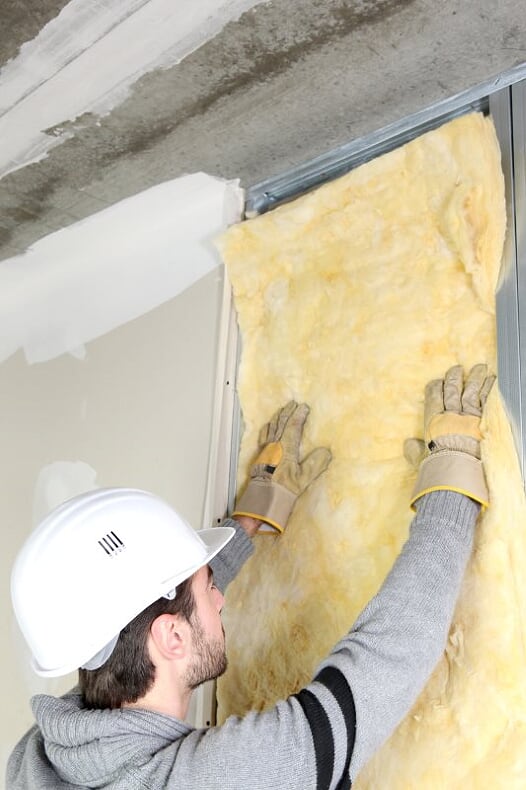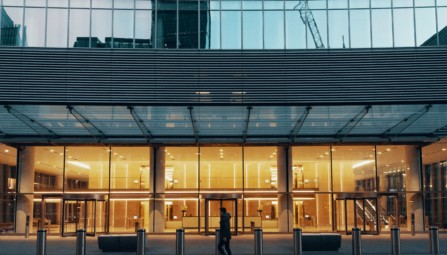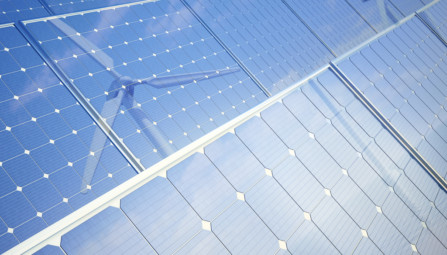ENERGY AND LOW CARBON DEVELOPMENT ACTION PLAN
Buildings and climate change
At UK level, emissions from energy consumption in buildings represent around 68% of the total12, with 35% coming from industrial/commercial buildings and 33% from domestic properties, with the remainder from transport. In Reading, the equivalent figure is 79%, with an almost equal split between industrial/commercial and domestic. The vast majority of building emissions come from electricity (where they are typically generated at power stations) and gas (which is piped to homes and businesses directly). Reducing emissions from buildings requires insulating homes and businesses, using energy efficient devices and appliances and generating more renewable energy.
Gas, oil, petrol and diesel are fossil fuels and therefore have a high carbon footprint. Whilst electricity generated using fossil fuels has even higher carbon emissions, recent reductions in the ‘carbon intensity’ of electricity in the UK and the planned continuation of this through further investment in renewable energy generation makes electrification of heat and transport a key strategy for the UK.
Significant additional demands for electricity must be mitigated by reducing wasted energy and through harnessing local renewable energy resources.

The UK’s energy infrastructure is exposed to the impacts of a changing climate and Reading is no exception. In the coming decades we can expect:
- Disruption of power networks impacting on wellbeing and the local economy
- Flood risk to energy infrastructure and networks
- Heavy rain/high winds leading to more impacts on networks such as through pylons and local power networks
- Risk of high loads and changing power use patterns from hot and/or unusual weather
- Increased discomfort in buildings where air conditioning fails
- Urban heat island effects becoming exacerbated by more air conditioning, generating and exhausting heat
- More positively, a warmer climate could lead to lower heating requirements during the winter months which could reduce carbon emissions associated with this source
Progress to date
Reading has had a lot of new development which means that more efficient buildings are being constructed as building regulations and planning requirements drive higher standards:
- Lighting in many newer properties and streetlighting are now LED, which use much less power
- Newer buildings have been built to higher standards than the national regulations through local planning standards
- Renewable energy generation has been a priority for the Council which owns and operates over 7500 solar panels in the town
- The Council has upgraded its council housing, which represents over 10% of the town’s housing, to a good energy efficiency standard
- Early adoption of ‘smart city’ technology in Reading has potential to support efforts to reduce emissions in future
Reading has seen a significant reduction in emissions associated with buildings since 2005, with data from 2018 showing a 52% reduction in per capita emissions.
Priorities on the pathway to net zero for energy and low carbon development
To achieve the target of a net zero carbon Reading by 2030 will require:
- Substantial reductions in heat loss from buildings through a major retrofitting programme for Reading
- The electrification of transport and heat (as opposed to fossil fuels)
- An order of magnitude increase in renewable heat and electricity generation
- The use of smart technologies such as batteries and varied time of power use
Reducing demand is the first step in achieving a zero carbon future. New developments are built to a higher standard but it will be important to reach the zero carbon standards set out in Reading’s Local Plan. While ensuring that new development does not add to Reading’s carbon footprint is vital, perhaps more important is the retrofitting of existing buildings that were built to a lower standard but which will remain in place for a long time to come. Many of these have solid walls and may be protected heritage buildings with high heat losses and are more difficult to insulate. Such buildings can cause social and health risks for those who struggle to afford to heat them and who may find themselves in ‘fuel poverty’ as a result.
Reading has thus far installed solar panels on only a fraction of its roof spaces. With solar PV (photo-voltaic) panels costing significantly less than a few years ago, Reading should quickly move to install solar panels onto viable roof spaces.
Reading must quickly build its local skills base and bring forward a step change in retrofitting buildings. In order to retrofit all the homes in Reading, a total of 17 houses per day would need to be completed. Modelling work shows that if housing could be lifted to an EPC ‘B’ rating, there would still be a significant amount of clean energy generation needed to bring the gap between that and zero carbon. Previous schemes have shown that householders and business owners will be unlikely to act without significant incentives and availability of finance, so this must be made available locally, especially for those least able to afford it, if Reading is to succeed.
Reading must also increase its local capacity to install energy reduction and renewable energy solutions and stimulate the market in low carbon products and services. There is a need to work closely with the energy companies to plan a low carbon energy future. Significant infrastructure projects need to develop quickly to enable a net zero carbon target to be achieved by 2030 through a new ‘energy master plan’ for Reading. This plan will map out a technology pathway and seek to establish financially sustainable ways to deliver the energy infrastructure needed which ensures energy is affordable. Supporting the local economy through local ownership of energy assets and local supply chain development are also important. Major town centre developments will need to be serviced by, and will form part of, a district green energy network which accesses local renewable heat reserves which are likely to predominantly be from the ground and local water courses as these are the most prevalent source of renewable heat in Reading. Clusters of houses and businesses will benefit from collective renewable heat and electricity generation equipment.
The choices we all make about how we use power will be a critical success factor in meeting the ambition for a net zero carbon Reading by 2030. Technology can help us and the smart city approaches that will allow us to easily control the way we utilise our local renewable energy to power our transport and buildings will also be vital. Minimising energy losses through distribution and transmission will be a further priority.
Key adaptation priorities for energy and the built environment
As we make an energy transition we need to consider the impacts of climate change and how they will change our needs in terms of buildings and transport and our newly developing local energy infrastructure. We will need to work carefully with our local environment and use it with care to help us meet our low carbon energy needs. New risks to the existing power distribution system will also need to be carefully managed. Risks relating to overheating in Reading’s property also needs to be carefully considered.
Energy and Low Carbon Development Action Plan: our aim is that by 2025 Reading is taking urgent action to decarbonise its energy networks, increase energy efficiency and create renewable energy capacity. It has concrete plans to achieve sufficient demand reduction to enable its annual energy needs to be 100% covered by its renewable generation, taking account of the increased load from transport and heat becoming electrically powered.











